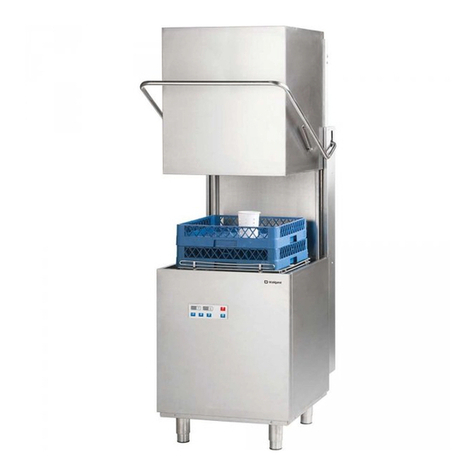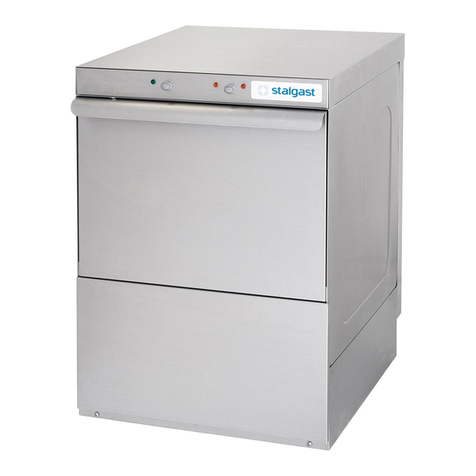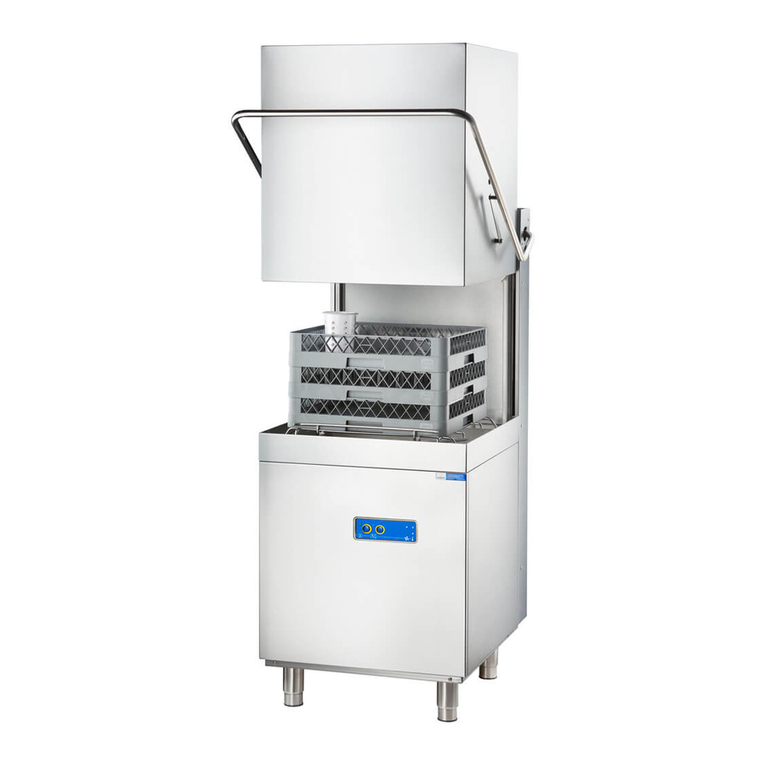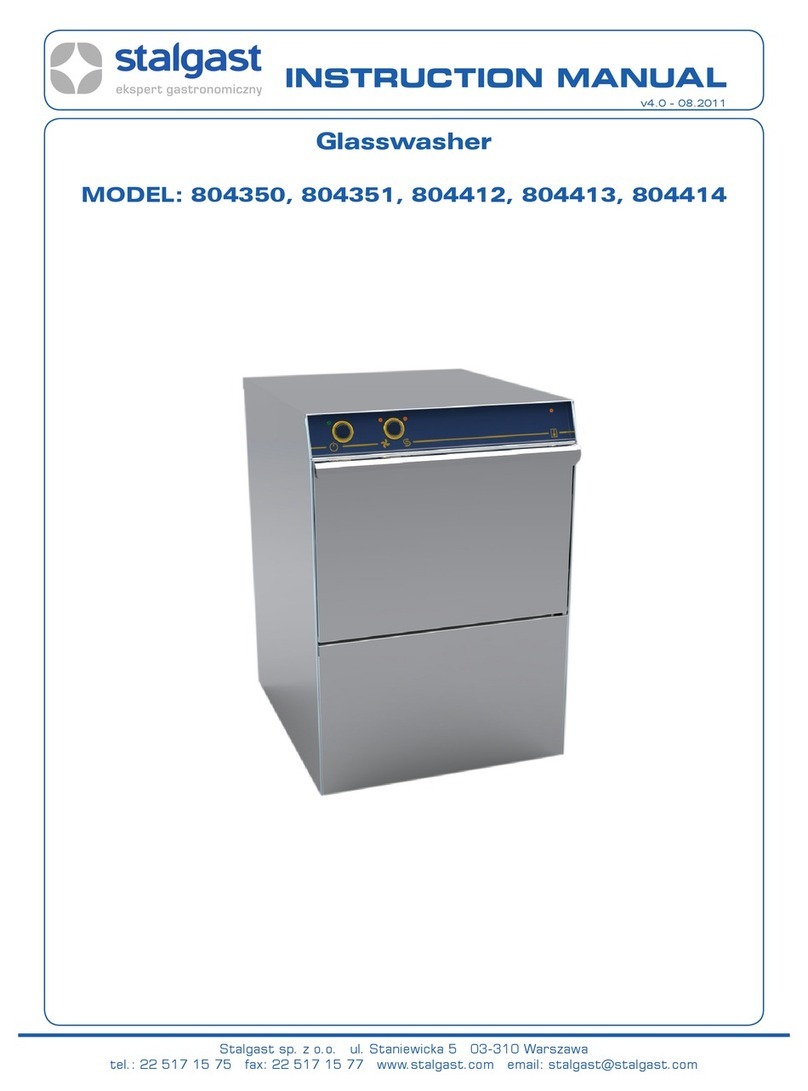tel.: 22 517 15 75 fax.: 22 517 15 77 www.stalgast.com email: stalgast@stalgast.com
Before starting the appliance, make sure that the supply and drain hoses are not bent, blocked or
otherwise damaged during installation.
IV. Setting the appliance
The appliance must be delivered to the installation site, unpacked and the contents of the package should be
checked. In case of damage to the appliance or any of its components, the shipping company must be notified
immediately. The packaging materials should be kept away from children and pets, as they can cause an
accident. All materials used to pack the product are environmentally friendly and can be safely stored in a
suitable place.
Recyclable components are marked as follows:
•PE – polyethylene: external packaging components, manual jacket, fastening components
•PP – polypropylene: grips
•PS – polystyrene foam: edge protection, package cover.
•Wooden and cardboard components must be left in places intended for this purpose in accordance
with applicable law.
It is forbidden to store the appliance and its components directly in the environment. The appliance was made
of stainless steel (alloy) and metal elements that can be easily removed. Plastic parts of the appliance are
marked with an appropriate symbol.
Connections to the devices must conform to the standards in force at the installation site. The
manufacturer is not liable for any injury or damage to the product resulting from failure to comply with the
standards in force at the installation site. Before installing the appliance, make sure that the moisture-sensitive
components are properly protected against wetting, e.g.: during the washing of the appliance. The appliance
should be set at a desired location and then the protective packaging should be removed. The appliance should
be leveled using a spirit level and the four adjustable feet, thus ensuring stable operation. Any other way of
leveling the appliance should be approved by the manufacturer.
V. First start-up
Before starting the appliance, check the correct operation of the electronic safety system. The above steps
and the first start-up may only be done by technical service personnel, who will also conduct a short training in
the operation of the appliance. Each appliance is equipped with an adjustable rinse aid dispenser. In contrast,
the adjustable washing liquid dispenser is only supplied with some models. A container for the washing liquid
and rinse aid must be put in place and then connected to suction tubes: the transparent one to the washing
liquid, and the blue one to the rinse aid. To adjust, use the adjustment screws shown in (Fig. 3 and 5). It is
recommended that adjustments be made by the staff of the company providing the rinse aid and washing liquid.
Before connecting the suction tubes, weights should be attached (to keep the tube at the bottom of the
container) and filters should be installed. (Fig. 4)
Figure 3Figure 4Figure 5
If the liquid dispensers have not been installed prior to installing the appliance, it can be done at a later time
using a suitable tool set.
Alternatively, an external washing liquid dispenser can be connected through an electrical connection via a
2x0.5mm H07 RN-F cable. The cable must be connected through the passage indicated in the technical data
diagram, in accordance with the electrical parameters of the appliance and with the laws and regulations in
force. Dispenser parameters: 230V/50Hz, 15W. The washing liquid dispenser is connected to the dishwasher
through a transparent tube.




































